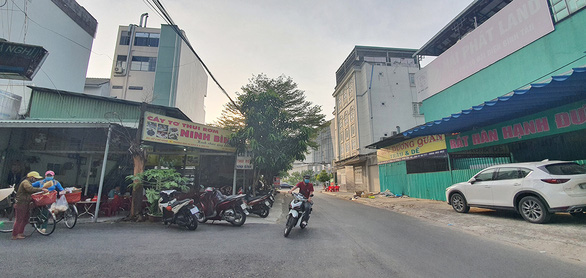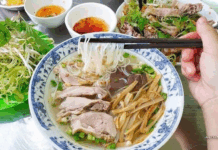‘Let’s eat dog meat!’ and ‘How about some vitamin woof-woof?’ are no longer popular expressions amongst office workers looking for after-hours meals.
“It is impossible to run this business with so few customers,” said Nguyen Van Phuc, the owner of a 20-year-old dog meat restaurant on Road No. 10 in the city’s Binh Chanh District.
“About 99 percent of restaurant owners are giving up their business because of huge losses.
“Dog meat eateries are in the same boat.”
Changed habit
Phuc started off in the dog meat businesses because it allowed him enough profits to save money and buy gold which he could send each month to his family in the northern province of Vinh Phuc.
In his heyday, about 10 years ago, Phuc was selling 5-7 dogs – about 100 kilograms of meat – each day during his restaurant’s opening hours from 11:00 am to 11:00 pm.
“I moved from Go Vap District to Binh Chanh in 2007 or 2008 because of strong competition from other dog meat restaurants in Go Vap,” Phuc recalled.
“There are much fewer dog meat restaurants here in Binh Chanh and the workers at the local industrial zones like our restaurant.”
At its peak popularity, Phuc’s restaurant was so busy that his staff had to order fully-prepared dog meat from partners to meet the demand.
He used his success to help his brother-in-law open his own dog meat restaurant which was also quite busy.
According dog meat veterans, as the construction of industrial zones ballooned in Ho Chi Minh City during the 2000s and 2010s, the popularity of dog meat grew to meet the demand of northern laborers who migrated south.
Restaurants selling affordable dog meat began to flood Nguyen Oanh and Quang Trung Streets in Go Vap District, Lac Long Quan and Cach Mang Thang 8 Streets in Tan Binh District, Le Tuan Mau Street in District 6, Provincial Road No. 10 in Binh Chanh District, and Ton Dan Street in District 4.
While young diners new to the dog meat scene were busy seeking out new restaurants with a wide variety of dog dishes, older customers typically chose a dog meat restaurant based off its age, believing that older restaurants belonging to migrants who moved from the north to south around 1954 offered fresher products with a more traditional taste.
Dog meat restaurants established after 1975, particularly those built between 1990 and 2000, are considered ‘new dog meat restaurants’ and are typically geared toward lower-income internal migrant workers.
Over time, these restaurants have adapted to fit the palates of internal migrants form the Mekong Delta by creating recipes involving coconut water and South Korean business owners by stewing dog meat with ginseng and beans.
One restaurant on Nguyen Thi Minh Khai Street in District 1 is even owned by North Koreans.
Dog meat memories
For the last five years, however, dog meat stores have started to close up shop.
“It is the law of supply and demand,” said Nguyen Van Hai, a dog meat restaurant owner from Binh Tan District.
“When demand decreases, supply decreases, too.
“It seems that more and more people who once loved eating dog meat are beginning to turn their backs on us.”
The decline in demand has led to the closure of dozens of popular dog meat restaurants, including Cu Rieng, Hai Mo, and Nhat Tan, Ha Noi.
Once popular ‘dog meat districts’ such as the area surrounding Tan Son Nhat International Airport have seen the number of dog meat joints decline by more than 60 percent.
“Owners wouldn’t be giving up their business if they were still turning a profit,” said Le Thi Hoang, the owner of a store in Go Vap District which specializes in selling dog meat to restaurants near Tan Son Nhat.
“Everyone seems to be suffering heavy losses.”
Attitudes toward dog meat in recent years have even left local fresh dog meat sellers, such as those at Ong Ta Market in District 3, feeling embarrassed to have their photos taken near their stalls.
Those in the industry attribute the decline in popularity to changing attitudes toward human health and the well-being of animals, with many in Vietnam’s growing middle class now considering canines as friends rather than food.
Pressure from media
“In my travels, I’ve found that the decline in dog meat demand is a worldwide trend,” said Le Thi Phuong Oanh, a Vietnamese expat living in Busan, South Korea.
“Many stores that have been selling dog meat for generations have had to close.”
According to Oanh, many South Koreans have turned their backs on dog meat due to critical opinions printed in the news or published on social media.




